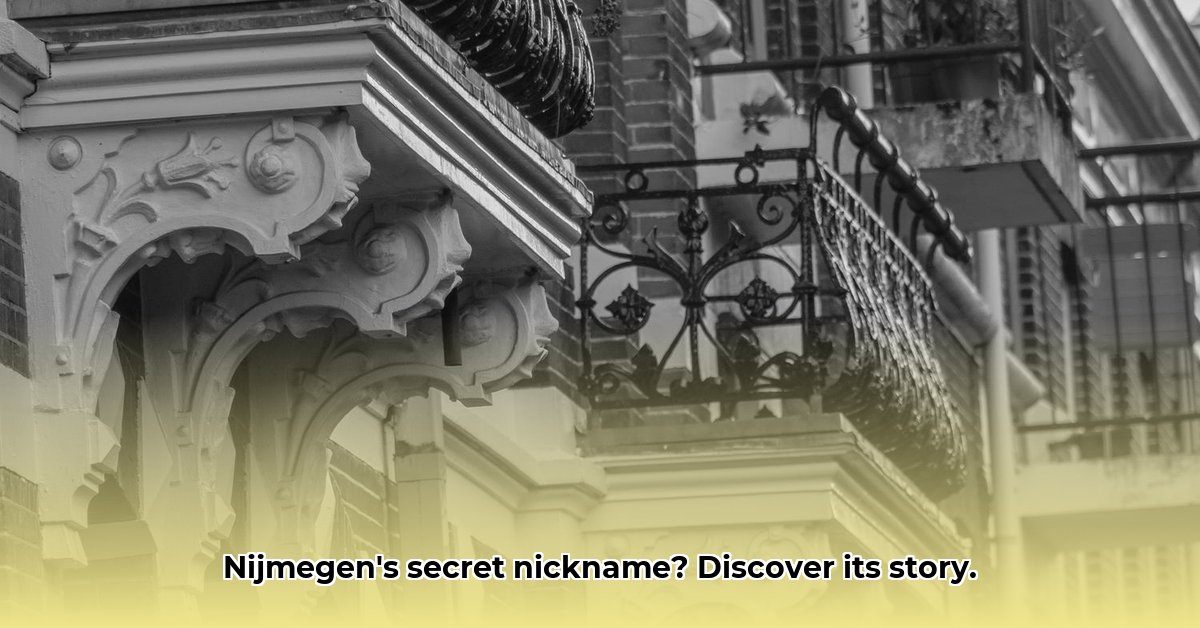
Bijnaam Nijmegen: Uncovering a City's Secret Histories
Eish, have you ever heard of Nijmegen, that stunning city nestled on the banks of the Waal River? It's not just known for its breathtaking views, nee, it's also got a whole heap of interesting nicknames! The most famous one is easily "Keizerstad" (Emperor City), a name that screams out a seriously impressive history. But what's the real story behind that regal title? And what other cool bijnamen (nicknames) has Nijmegen picked up over the years? We're about to embark on a lekker linguistic adventure, uncovering the secrets hidden within these names and what they reveal about Nijmegen's character and its past. We'll even tackle nicknames like "Havana aan de Waal" – now that's a head-scratcher! Get ready to discover a whole new side of Nijmegen, a story told not just in bricks and mortar, but in the words people use to describe it.
"Keizerstad": A Royal Reputation
Right, let's start with the big daddy of them all: "Keizerstad," or Emperor City. This isn't just some fancy title; it's a testament to Nijmegen's strategic importance throughout history. Imagine this: for centuries, Nijmegen held a prime position, a crucial crossroads where empires clashed and trade flourished. Controlling Nijmegen meant controlling a vital gateway – a key to power and influence. This coveted spot, this undeniable significance, is what earned Nijmegen its royal title. It's more than just a nickname; it's a historical echo, a tangible link to a past filled with emperors, battles, and the shifting tides of power. Doesn't it make you think of grand ambitions and long-forgotten conflicts? The very name conjures images of majestic processions and powerful rulers.
But how did this nickname actually become so ingrained? We find clues in historical records, in the writings of chroniclers and travellers – echoes of past events that shaped the city’s identity. Historians suggest the nickname solidified during times when Nijmegen held strategic importance for one empire or another, though more research is needed to pinpoint the exact moment it gained widespread use. Perhaps the name reflects not only periods of direct imperial rule, but also Nijmegen's broader influence as a key player in its era. It's a nickname steeped in symbolism, representing Nijmegen's historical weight and enduring presence in the collective consciousness. It's a narrative etched in time, just waiting to be fully explored. Isn’t that fascinating? After all, don't names often tell us more about a place than mere geographical coordinates?
Beyond the Emperor: Other Nijmegen Nicknames
While "Keizerstad" undoubtedly takes centre stage, Nijmegen boasts a collection of other intriguing bijnamen, each adding a unique layer to its rich identity. One particularly captivating nickname is "Havana aan de Waal," a name that conjures up images of sun-kissed Caribbean shores and the mighty Waal River. This intriguing moniker suggests a surprising connection between Nijmegen and the vibrant city of Havana, Cuba. But what’s the story behind this unlikely pairing? The truth is, much of this link remains a mystery.
Some speculate it might reflect Nijmegen's bustling port history and its connections to global trade routes that extended far beyond Europe. Perhaps it reflects the diversity of people and cultures that passed through the city, adding an exotic flavour to its identity. Maybe there were strong trade links with the Caribbean, importing goods and ideas – a vibrant cultural exchange that left an indelible mark on Nijmegen's soul. Or maybe it's simply a more recent, playful comparison, a charming nod to the city's vibrant character. Further research is definitely needed to uncover the full story. This is why studying these nicknames provides such a unique window into local history – wouldn't you agree?
Other lesser-known nicknames likely exist, hidden away in local archives or tucked away in the memories of generations of Nijmegen residents. These nicknames probably offer a glimpse into unique qualities – its industries, its people, its unique spirit. Just imagine the stories they could tell!
Unveiling the Mystery: Researching Nijmegen's Nicknames
Uncovering the full story of Nijmegen's bijnamen is a fascinating detective story, a rewarding journey through time. We need to become historical sleuths, meticulously piecing together clues from various sources. This requires exploring local archives and libraries, sifting through ancient documents and maps. It also involves engaging with the community, listening to the stories passed down through generations by Nijmegen's residents – their personal accounts are invaluable pieces of this historical puzzle. Talking to older residents and family historians might reveal lesser-known nicknames, reflecting the city's evolution. A linguistic analysis of the nicknames – their origins and how their meanings may have shifted – is crucial. Don't you think that uncovering these hidden stories is a truly enriching experience?
The digital age also offers new investigation tools. Online databases and digital archives can help us piece together fragments of the past, helping us build a more complete picture of Nijmegen’s naming history. This is an ongoing project – a collaborative effort that requires a diverse range of skills and perspectives.
Key Takeaways:
- Nijmegen’s nicknames are a treasure trove of local history and culture.
- Combining archival research with online searching can yield surprising results.
- Understanding historical and linguistic context is vital for interpreting the nicknames' significance.
- Uncovering these nicknames helps preserve Nijmegen's cultural heritage.